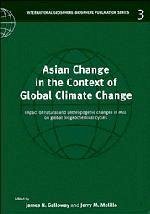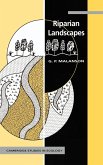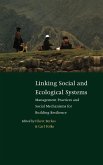Nearly two-thirds of the world's population lives in Asia, and many countries in that region are currently undergoing very rapid industrial, agricultural and economic development. The Framework Convention on Climate Change constrains developed countries with regard to their future emissions of greenhouse gases, but recognises the special needs of developing countries. There is growing appreciation of the ways in which developing countries in the Asian region both contribute to global changes (by altering biogeochemical pathways and cycles) and are themselves affected by those changes. This volume uses the intellectual efforts and findings of the IGBP community to provide the first integrated analysis of the interactions between global change and Asian change, with particular attention given to the role of China. The book will be of interest to readers in a wide range of academic disciplines (natural sciences and socio-economic) and for those involved in national and international policy development relevant to global change.
Table of contents:
List of contributors; Preface; 1. Asian change in the context of global change: an overview J. N. Galloway , D. S. Ojima and J. M. Melillo; 2. Paleoclimatic change of monsoonal China linked to global change Z. S. An and L. G. Thompson; 3. Coupled biogeochemical cycles of carbon, nitrogen, phosphorus, and sulfur in the land-ocean-atmosphere system F. T. Mackenzie, L. M. Ver and A. Lerman; 4. Biomass burning: an ecosystem process of global significance J.-P. Malingreau and Y. H. Zhuang; 5. Asian grassland biogeochemistry: factors affecting past and future dynamics of Asian grasslands D. S. Ojima, X. Xiao, C. Togtohyn and X. S. Zhang; 6. Carbon and water exchange of terrestrial systems E. -D. Schulze and M. Heimann; 7. Interannual variation in the terrestrial carbon cycle: significance of Asian tropical forest conversion to imbalances in the global carbon budget D. L. Skole, W. A. Salas and C. Silapathong; 8. Methane emissions from rice fields H. U. Neue and J. Boonjawat; 9. Drainage basins, river systems, and anthropogenic change: the Chinese example C. J. Vorosmarty, C. Li, J. Sun and Z. Dai; 10. Sediment and nutrient transport to the coastal zone D. Hu, Y. Saito and S. Kempe; 11. Carbon and nutrients in the ocean C-T. A. Chen and S. Tsunogai; 12. Preliminary assessment of impacts of global change on Asia C. B. Fu, Jeong-woo Kim and Z. C. Zhao; 13. Symposium summary D. Ye and M. Yoshino; Index.
Developing countries in the Asian region both contribute to global changes (by altering biogeochemical pathways and cycles) and are themselves affected by those changes. This volume provides the first integrated analysis of the interactions between global change and Asian change.
Reviews existing impact and possible future effects of global change in Asia.
Table of contents:
List of contributors; Preface; 1. Asian change in the context of global change: an overview J. N. Galloway , D. S. Ojima and J. M. Melillo; 2. Paleoclimatic change of monsoonal China linked to global change Z. S. An and L. G. Thompson; 3. Coupled biogeochemical cycles of carbon, nitrogen, phosphorus, and sulfur in the land-ocean-atmosphere system F. T. Mackenzie, L. M. Ver and A. Lerman; 4. Biomass burning: an ecosystem process of global significance J.-P. Malingreau and Y. H. Zhuang; 5. Asian grassland biogeochemistry: factors affecting past and future dynamics of Asian grasslands D. S. Ojima, X. Xiao, C. Togtohyn and X. S. Zhang; 6. Carbon and water exchange of terrestrial systems E. -D. Schulze and M. Heimann; 7. Interannual variation in the terrestrial carbon cycle: significance of Asian tropical forest conversion to imbalances in the global carbon budget D. L. Skole, W. A. Salas and C. Silapathong; 8. Methane emissions from rice fields H. U. Neue and J. Boonjawat; 9. Drainage basins, river systems, and anthropogenic change: the Chinese example C. J. Vorosmarty, C. Li, J. Sun and Z. Dai; 10. Sediment and nutrient transport to the coastal zone D. Hu, Y. Saito and S. Kempe; 11. Carbon and nutrients in the ocean C-T. A. Chen and S. Tsunogai; 12. Preliminary assessment of impacts of global change on Asia C. B. Fu, Jeong-woo Kim and Z. C. Zhao; 13. Symposium summary D. Ye and M. Yoshino; Index.
Developing countries in the Asian region both contribute to global changes (by altering biogeochemical pathways and cycles) and are themselves affected by those changes. This volume provides the first integrated analysis of the interactions between global change and Asian change.
Reviews existing impact and possible future effects of global change in Asia.








